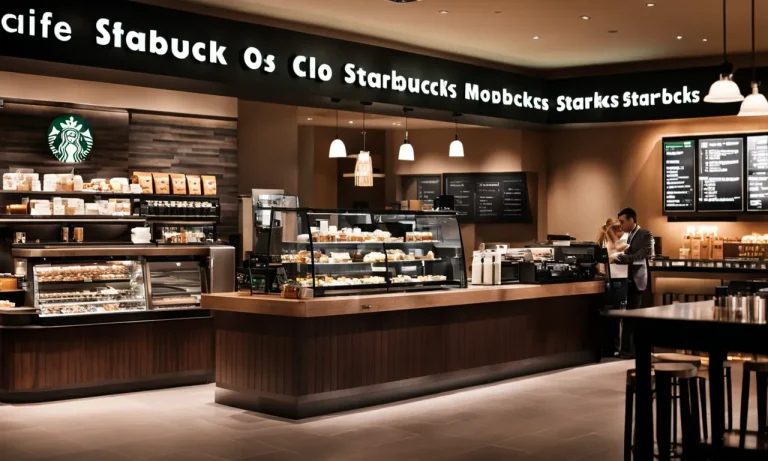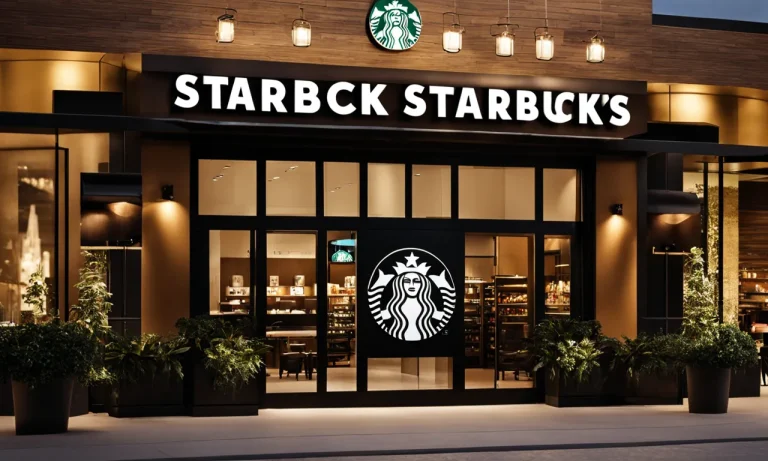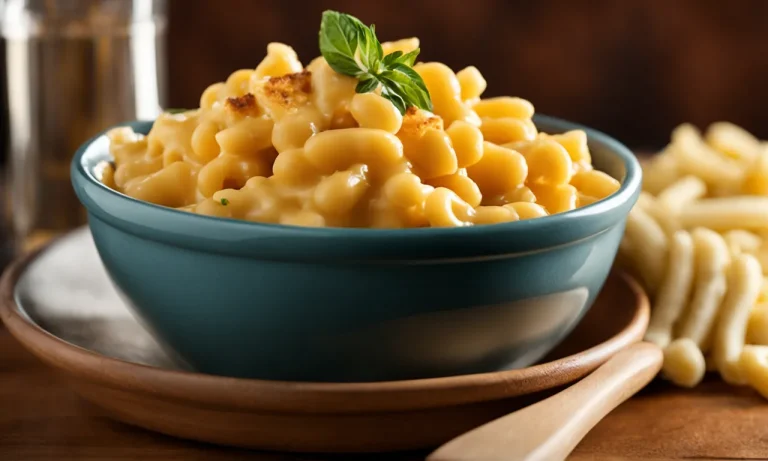Finding mice in a restaurant is every diner’s nightmare. If you spot one scurrying across the floor, you’ll likely lose your appetite on the spot. But can a restaurant actually get shut down just for having a rodent problem?
The short answer is yes: Health inspectors take mice very seriously, and just one sighting could lead to serious consequences for the business.
Mice Are a Public Health Hazard
Mice may seem harmless and cute, but they pose a significant threat to public health. These small rodents can carry and transmit various diseases, making them a serious concern for restaurants and other food establishments.
Can Transmit Diseases
One of the main reasons why mice are considered a public health hazard is their ability to transmit diseases. They can carry pathogens such as bacteria, viruses, and parasites, which can be easily spread through their urine, droppings, and saliva. Some of the diseases that mice can transmit include:
- Salmonellosis: This bacterial infection can cause symptoms like diarrhea, fever, and abdominal cramps. It is commonly associated with contaminated food and water.
- Hantavirus: This potentially life-threatening virus is primarily spread through the inhalation of dust contaminated with mouse droppings or urine. It can lead to severe respiratory problems and even death.
- Leptospirosis: This bacterial infection can be contracted through contact with water or soil contaminated with urine from infected animals, including mice. It can cause symptoms ranging from mild flu-like symptoms to severe organ damage.
These are just a few examples, and the list of diseases that mice can transmit is extensive. Therefore, it is crucial for restaurants to take proactive measures to prevent mice infestations and ensure the safety of their customers.
Contaminate Food and Surfaces
Another reason why mice are a public health concern in restaurants is their ability to contaminate food and surfaces. Mice are known to chew through packaging and containers, leaving behind droppings, urine, and hair.
This contamination can occur on food items, food preparation areas, storage areas, and even dining areas.
The presence of mouse droppings and urine on food or food contact surfaces can lead to cross-contamination and the spread of harmful bacteria. This can result in foodborne illnesses among customers who consume contaminated food.
Additionally, the sight of mice or evidence of their presence can have a negative impact on the reputation of the restaurant and lead to customer dissatisfaction.
Proper sanitation practices, regular inspections, and effective pest control measures are essential to prevent mice from contaminating food and surfaces in restaurants. By implementing these measures, restaurant owners can ensure the safety and well-being of their patrons.
Health Code Regulations on Pest Control
When it comes to running a restaurant, maintaining a clean and sanitary environment is of utmost importance. One of the biggest concerns for any establishment is the presence of pests, such as mice. Not only can they be a health hazard, but they can also lead to serious consequences for the restaurant, including the possibility of being shut down.
Requirements for Passing Inspection
In order to pass health code inspections, restaurants are required to adhere to strict regulations regarding pest control. These regulations vary by jurisdiction, but generally include measures such as regular pest control treatments, proper storage of food, and regular cleaning and sanitation practices.
Restaurants must work with licensed pest control professionals who are trained to identify and eliminate any signs of pests. This includes not only mice, but also cockroaches, flies, and other common pests that can be found in food establishments.
Regular inspections are often conducted to ensure that these measures are being followed.
Maintaining a clean and pest-free environment not only ensures the safety of customers and employees, but it also helps to safeguard the reputation of the restaurant. A single incident of pest infestation can lead to negative reviews and loss of business, which can be detrimental to the success of the establishment.
Critical vs Non-Critical Violations
Health code violations are categorized into two main types: critical and non-critical. Critical violations are those that pose an immediate threat to food safety, and they can result in immediate closure of the restaurant.
Examples of critical violations related to pest control may include evidence of mice or other pests in food storage areas, droppings or nesting materials found in food preparation areas, or inadequate pest control measures in place.
Non-critical violations, on the other hand, are those that do not pose an immediate threat to food safety but still need to be addressed. These violations can lead to penalties or fines, and if left unresolved, they may escalate to critical violations.
Examples of non-critical violations related to pest control may include minor structural issues that allow pests to enter the premises or improper maintenance of trash storage areas.
To avoid the risk of being shut down for mice or other pest-related issues, it is essential for restaurants to prioritize pest control and maintain a strong focus on cleanliness and sanitation. By following the proper regulations and working with licensed professionals, restaurants can ensure the safety and satisfaction of their customers while also avoiding any potential legal consequences.
What Happens When Mice Are Spotted
Discovering mice in a restaurant can be a cause for concern and potentially lead to serious consequences. Health and safety regulations are in place to protect both customers and employees, and any signs of a rodent infestation can have a significant impact on a restaurant’s operations.
Here’s what typically happens when mice are spotted:
Inspection Score Lowered
Once mice are spotted in a restaurant, health inspectors are likely to take notice during their routine inspections. Inspectors will thoroughly examine the premises, looking for any signs of infestation, such as droppings, gnaw marks, or nests.
If mice are found, the restaurant’s inspection score is likely to be lowered, potentially resulting in penalties or fines. This can damage the restaurant’s reputation and lead to a loss of customers.
Forced to Close Until Issue is Resolved
In cases where the infestation is severe or poses a significant risk to public health, the restaurant may be forced to close temporarily. This closure is necessary to address the problem and ensure that proper pest control measures are implemented.
During this time, the restaurant will need to thoroughly clean and sanitize the premises, seal any entry points, and work with professional exterminators to eliminate the mice. Additionally, the restaurant may be required to pass a follow-up inspection before being allowed to reopen.
Repeat Infestations Can Lead to Revoked Permit
If a restaurant experiences repeat infestations or fails to take appropriate measures to prevent future rodent problems, it could face more severe consequences. In some cases, this can lead to the revocation of the restaurant’s operating permit.
This means that the establishment would no longer be allowed to operate and would need to address the issue before reapplying for a permit. The consequences of a revoked permit can be devastating for a restaurant, leading to financial losses and potentially permanent closure.
It’s important for restaurant owners and operators to prioritize pest control and take proactive measures to prevent mice and other pests from entering their establishment. Regular inspections, proper sanitation practices, and effective pest control strategies can help minimize the risk of a rodent infestation and avoid the potential consequences that come with it.
How Restaurants Can Prevent Mice
Mice can be a serious problem for restaurants, not only because they are unsightly and unhygienic, but also because they can lead to a restaurant being shut down. To avoid this unfortunate situation, restaurant owners and managers should implement effective strategies to prevent mice from infesting their establishment.
Here are some key steps that restaurants can take to keep mice at bay:
Store Food Properly
One of the most important steps in preventing mice is to store food properly. Mice are attracted to food sources, so it is crucial to keep all food tightly sealed in containers that are mouse-proof. This includes dry goods, produce, and even pet food.
Additionally, food storage areas should be regularly cleaned and inspected for any signs of mice or droppings. By eliminating access to food, restaurants can greatly reduce the likelihood of a mouse infestation.
Take Out Trash Frequently
Another way to prevent mice is to take out the trash frequently. Mice are opportunistic scavengers and will happily feast on any food scraps they find in garbage bins. By emptying the trash regularly, restaurants can remove this attractive food source and discourage mice from lingering around the premises.
It is also important to use sturdy and tightly sealed trash cans to further prevent mice from gaining access to the garbage.
Seal Up Entry Points
Mice can enter a restaurant through even the tiniest of openings, so it is crucial to seal up any potential entry points. This includes gaps around doors and windows, cracks in walls or floors, and openings around utility lines.
By blocking off these access points, restaurants can make it much more difficult for mice to enter the premises. It may be necessary to hire a professional pest control company to thoroughly inspect the restaurant and identify any areas that need to be sealed.
Conclusion
Mice in a restaurant are not just a nuisance – they pose a real health code violation that inspectors take very seriously. Just one sighting is enough to get a critical violation on an inspection report. Multiple violations can lead to closure of the business until the infestation is eradicated.
The best way for restaurants to avoid mouse problems is through diligent prevention measures like proper food storage, frequent trash removal, and sealing up any entry points.






